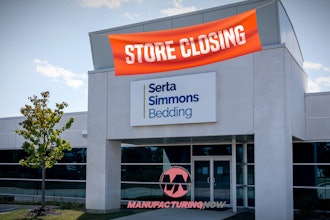
In real estate, it’s common to stage a home. Staging a home is readying the home for sale. In the staging process, no detail is overlooked. A realtor will often walk through the home as if they were the buyer; trying to see the home from their perspective. A realtor might ask clients to remove pictures, replace furniture, lay fresh mulch, touch up paint, etc. Staging a home makes it more appealing to multiple buyers. The more appealing the home, the higher the list price.
What if you “staged” the sale? What if you attended to every detail? Each detail is an opportunity to create value and differentiate your alternative. A little more time, energy, and effort can go a long way to creating value in the customer experience.
So, why don’t salespeople apply this extra effort or cover the details?
At any point in time, a realtor might have one or two homes on the market. Distributor salespeople manage multiple opportunities per day. An abundance of opportunity creates a poverty of effort and attention. Some salespeople view the sale as a mere transaction versus an end-to-end experience. When the experience is viewed as a mere transaction, salespeople miss opportunities to add value before and after the sale. Imagine treating each sale as if it were your only opportunity; you would find more ways to create and add value.
Realtors spend hours preparing to put a home on the market. They develop marketing plans and spread the word to stimulate demand. How are you preparing for your calls? Our research shows that less than 10 percent of salespeople plan their sales calls; whereas, 95 percent of top-achieving salespeople routinely plan every call. Failing to plan leads to a lack of confidence, less productive calls, and poor performance.
Realtors view each home, client, and situation, as unique. No one experience is the same. Therefore, realtors make adjustments and try new ideas. Distributor salespeople often make similar calls. They see the same customers, ask the same questions, and present the same products. Familiarity creates comfort and facilitates customer relationships. This familiarity also breeds complacency. Salespeople fall victim to the status quo while opportunities to add value hide in plain sight.
Customers use multiple sources of information to make buying decisions. Customers review the information we present and gather feedback from other decision makers. Customers use previous experiences with you, your products, and company, to make decisions. Customers decide based on a myriad of factors. Although some decisions seem straightforward, they are not. Customers analyze the details and each detail represents an opportunity for you to add value. Here are some ideas to help you “stage” the sale more effectively.
Personalize the Solution
Realtors ask their clients to remove personal items like family pictures or children’s artwork from the fridge. When prospective buyers see personal items, it’s harder for them to visualize the home as their home. When you’re presenting your solution, how easy is it for the buyer to view it as their own? Does it look more like your solution or their solution?
I recently met with an industrial distributor that repairs pneumatic tools. As part of their repair process, they sandblast and repaint the tool to match the customer’s company colors. The easier it is for the buyer to view your solution as their solution, the more likely they are to buy. Find ways to personalize your solution for the customer.
Enhance the Proposal and Presentation
Realtors hire photographers to capture the best photos for online marketing and brochures. High-quality photos are critical because it is the first impression people have when they view the home online. The photos will lure prospective buyers to schedule a showing or visit an open house.
Imagine if you took the same level of care for each one of your proposals. Review your proposals and ask yourself, “Does this excite the buyer?”, “Is the quality of the proposal consistent with the quality of the solution I am presenting?”, “How can I enhance this proposal or presentation?” The look and feel of your proposal builds perceived value. If your proposal or presentation doesn’t excite you, it’s not going to excite the buyer.
Create a Perceived Sense of Fairness
Realtors have clients list improvements made to their house. This list includes everything from new appliances, landscaping, light fixtures, new windows, and even tree trimming. This list of improvements helps justify the price asked for the home. A robust list of improvements builds a perceived sense of fairness.
Create a list of all the value-added extras you offer the customer. Explain to the customer how your solution has improved. A perceived lack of equity is the number-one reason why buyers object on price. A buyer thinks your price isn’t fair for what they’re getting. Adding more value will demonstrate fairness.
Present the Opportunity Value
We recently sold our home (in case you couldn’t already tell from the article). Our house has wood paneling throughout the kitchen and family room. Although we have always preferred the look, feedback from a few buyers indicated they would prefer to paint the wood paneling white. So, our realtor decided to “virtually” paint the woodwork. He was able to edit our photos to show potential buyers what the room would look like if the walls were painted white. Realtors help prospects see the potential, not the problem.
How could you help your customers see the potential? In Value-Added Selling, we call this opportunity value. Opportunity value is what you give the customer the ability to do tomorrow that they cannot do today. Perhaps your solution will save them more time, enhance productivity, or help the customer make more money.
Be able to clearly define how your solution positively impacts your customer’s solution for their customer. This is called presenting the synergy of your solution. Synergy means that the combination of something is greater than the sum of the individuals. Ask yourself this question to determine your synergy, “How does our solution add value to our customer’s solution?”
Consider this quote from Barbara Corcoran, famous realtor and Shark Tank host: “Buyers decide in the first eight seconds of seeing a home if they're interested in buying it. Get out of your car, walk in their shoes, and see what they see within the first eight seconds.”
What is the customer’s first impression of your solution? How often are you viewing your solution through the eyes of the customer? Adding more value begins with adding more effort and focusing on the details. Before your next presentation, focus on the details. Every detail overlooked by the competitor is an opportunity to differentiate.
 Reilly
Reilly






















